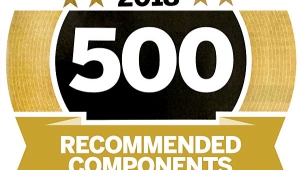| Columns Retired Columns & Blogs |
From https://cdn.stereophile.com/content/recommended-components-2018-edition-how-use-listings :
Class K
"Keep your eye on this product." Class K is for components that we have not reviewed (or have not finished testing), but that we have reason to believe may be excellent performers. We are not actually recommending these components, only suggesting you give them a listen. Though the report has yet to be published in certain cases, the reviewer and editor sometimes feel confident enough that the reviewer's opinion is sufficiently well formed to include what otherwise would be an entry in one of the other classes, marked (NR).











































